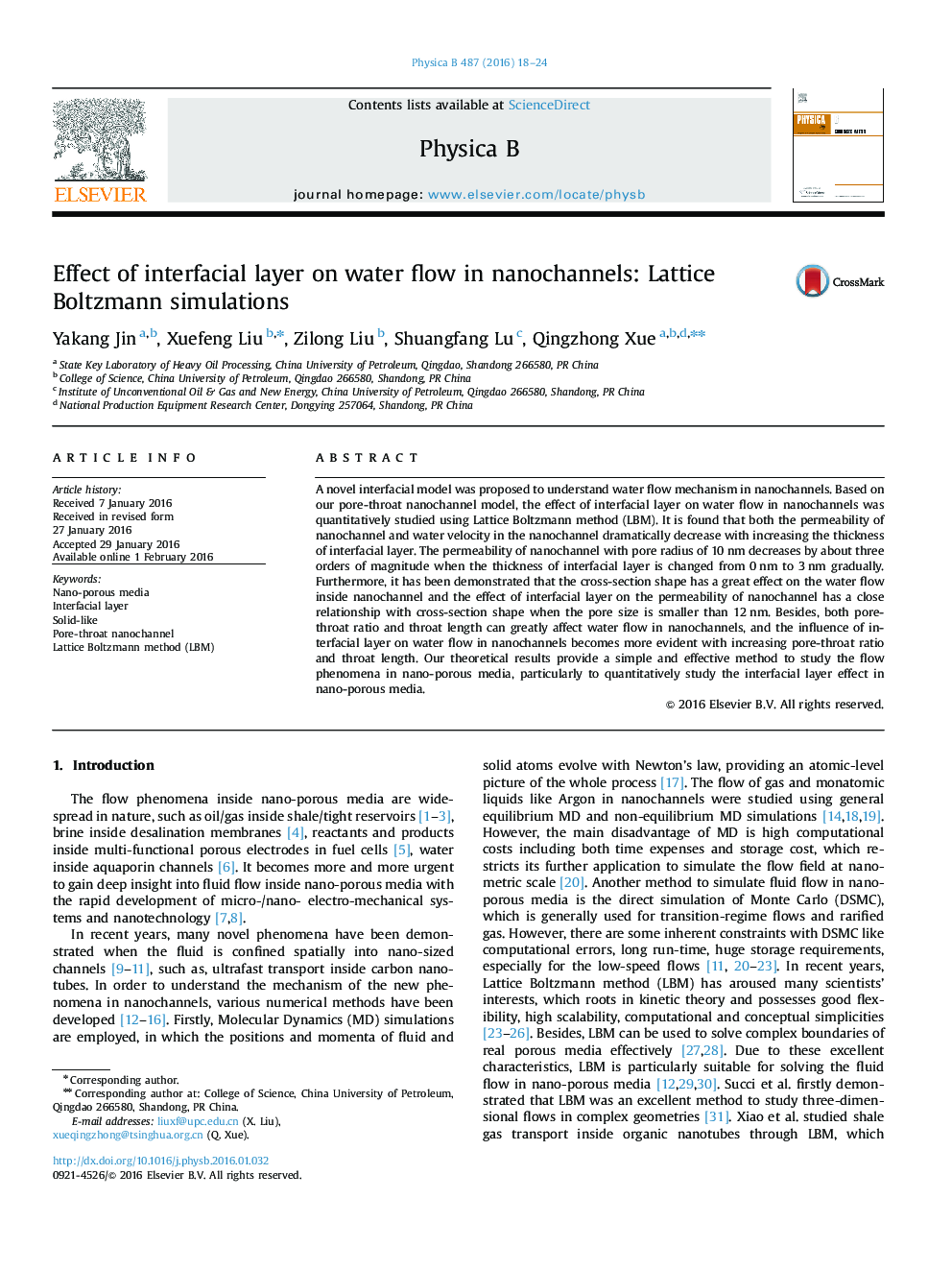| Article ID | Journal | Published Year | Pages | File Type |
|---|---|---|---|---|
| 1808625 | Physica B: Condensed Matter | 2016 | 7 Pages |
A novel interfacial model was proposed to understand water flow mechanism in nanochannels. Based on our pore-throat nanochannel model, the effect of interfacial layer on water flow in nanochannels was quantitatively studied using Lattice Boltzmann method (LBM). It is found that both the permeability of nanochannel and water velocity in the nanochannel dramatically decrease with increasing the thickness of interfacial layer. The permeability of nanochannel with pore radius of 10 nm decreases by about three orders of magnitude when the thickness of interfacial layer is changed from 0 nm to 3 nm gradually. Furthermore, it has been demonstrated that the cross-section shape has a great effect on the water flow inside nanochannel and the effect of interfacial layer on the permeability of nanochannel has a close relationship with cross-section shape when the pore size is smaller than 12 nm. Besides, both pore-throat ratio and throat length can greatly affect water flow in nanochannels, and the influence of interfacial layer on water flow in nanochannels becomes more evident with increasing pore-throat ratio and throat length. Our theoretical results provide a simple and effective method to study the flow phenomena in nano-porous media, particularly to quantitatively study the interfacial layer effect in nano-porous media.
